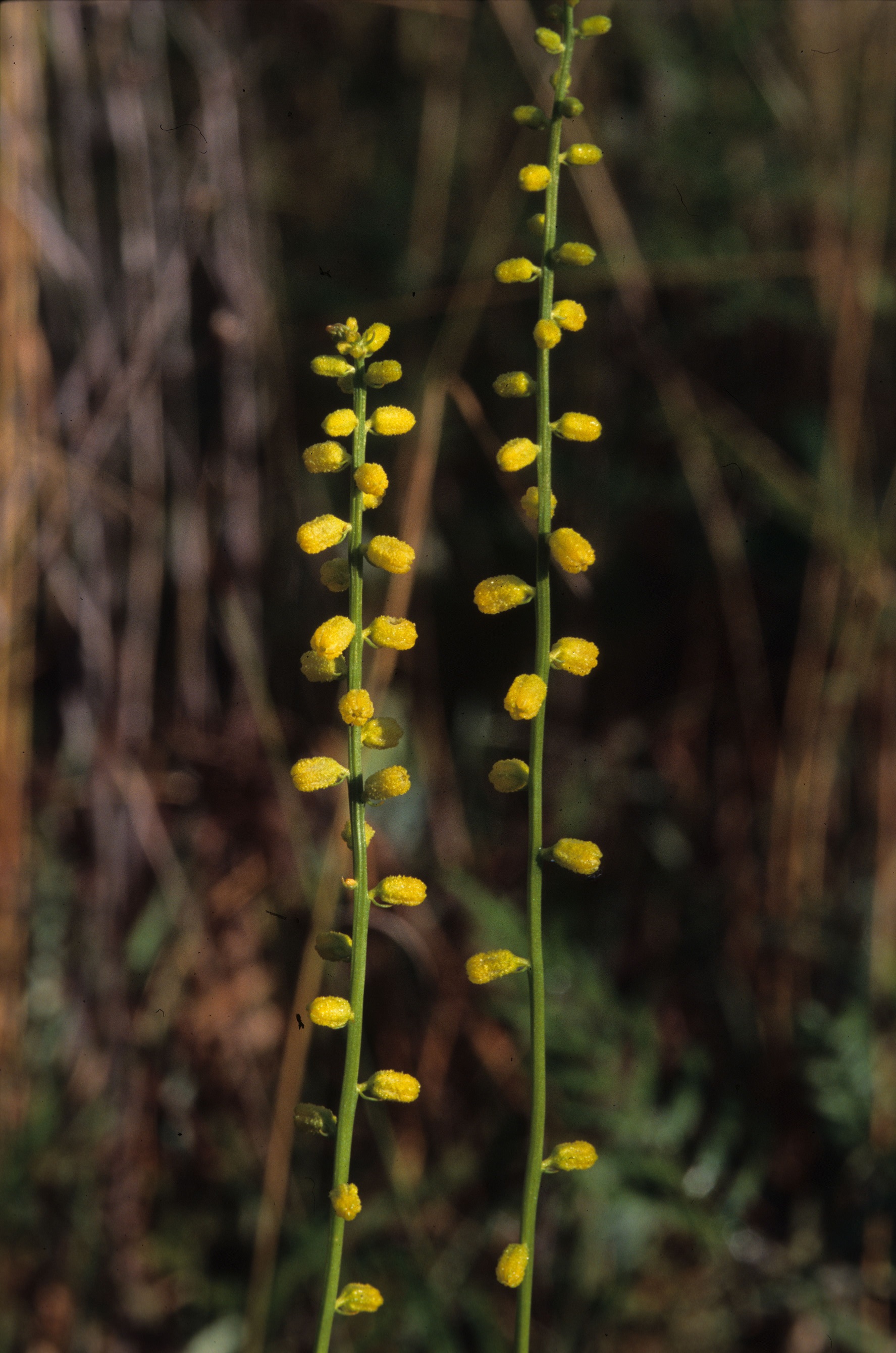Difference between revisions of "Aletris aurea"
KatieMccoy (talk | contribs) |
KatieMccoy (talk | contribs) |
||
| Line 33: | Line 33: | ||
===Phenology===<!--Timing off flowering, fruiting, seed dispersal, and environmental triggers. Cite PanFlora website if appropriate: http://www.gilnelson.com/PanFlora/ --> | ===Phenology===<!--Timing off flowering, fruiting, seed dispersal, and environmental triggers. Cite PanFlora website if appropriate: http://www.gilnelson.com/PanFlora/ --> | ||
| − | Flowers have been observed in June | + | Flowers have been observed in June<ref name="fsu"/>. |
<!--===Seed dispersal===--> | <!--===Seed dispersal===--> | ||
<!--===Seed bank and germination===--> | <!--===Seed bank and germination===--> | ||
| + | |||
===Fire ecology===<!--Fire tolerance, fire dependence, adaptive fire responses--> | ===Fire ecology===<!--Fire tolerance, fire dependence, adaptive fire responses--> | ||
This plant does well in areas that are annually burned (FSU Herbarium) | This plant does well in areas that are annually burned (FSU Herbarium) | ||
Revision as of 15:25, 22 March 2016
| Aletris aurea | |
|---|---|

| |
| Photo taken by Gil Nelson | |
| Scientific classification | |
| Kingdom: | Plantae |
| Division: | Tracheophyta - Vascular plants |
| Class: | Magnoliopsida– Monocotyledons |
| Order: | Dioscoreales |
| Family: | Nartheciaceae |
| Genus: | Aletris |
| Species: | A. aurea |
| Binomial name | |
| Aletris aurea Walter | |

| |
| Natural range of Aletris aurea from USDA NRCS Plants Database. | |
Common names: Late Flowering Colicroot; Golden Colicroot
Contents
Taxonomic notes
Description
A description of Aletris aurea is provided in The Flora of North America.
It is a perennial (Hall 1993). Flowers from spring to fall (Hall 1993).
Distribution
It is infrequent in north and west Florida; is found west to Texas and north to Maryland (Hall 1993).
Ecology
Habitat
This species requires high levels of sun and can be found in both poorly and well drained areas including savannas, flatwoods, bogs, and pine plantations[1][2]. Associated species include Aletris lutea, Aristida, and Pinus palustris[1]. Average maximum root depth is 14.5 cm.[3]
Phenology
Flowers have been observed in June[1].
Fire ecology
This plant does well in areas that are annually burned (FSU Herbarium)
Conservation and Management
Cultivation and restoration
The roots were used to for medicinal properties. Porcher explains that Pursh says it is an excellent remedy in colic, chronic rheumatism, and dropsical affections. In large doses it may cause nausea and vomiting.[4]
Photo Gallery
References and notes
Florida State University Robert K. Godfrey Herbarium Database. URL:http://herbarium.bio.fsu.edu. Last accessed: June 2014. Collectors: Loran C. Anderson, Robert K. Godfrey, R. Komarek, and R.A. Norris. States and Counties: Florida: Liberty. Georgia: Thomas.
Hall, David W. Illustrated Plants of Florida and the Coastal Plain: based on the collections of Leland and Lucy Baltzell. 1993. A Maupin House Book. Gainesville. 241. Print.
Wunderlin, Richard P. and Bruce F. Hansen. Guide to the Vascular Plants of Florida. Second edition. 2003. University Press of Florida: Gainesville/Tallahassee/Tampa/Boca Raton/Pensacola/Orlando/Miami/Jacksonville/Ft. Myers. 147. Print.
- ↑ 1.0 1.1 1.2 Florida State University Robert K. Godfrey Herbarium Database. URL:http://herbarium.bio.fsu.edu. Last accessed: June 2014. Collectors: Loran C. Anderson, Robert K. Godfrey, R. Komarek, and R.A. Norris. States and Counties: Florida: Liberty. Georgia: Thomas.
- ↑ Wunderlin, Richard P. and Bruce F. Hansen. Guide to the Vascular Plants of Florida. Second edition. 2003. University Press of Florida: Gainesville/Tallahassee/Tampa/Boca Raton/Pensacola/Orlando/Miami/Jacksonville/Ft. Myers. 147. Print.
- ↑ Brewer, J. S., D. J. Baker, et al. (2011). "Carnivory in plants as a beneficial trait in wetlands." Aquatic Botany 94: 62-70.
- ↑ Porcher, F. P. (1863). Resources of the southern fields and forests, medical, economical, and agricultural : being also a medical botany of the Confederate States; with practical information on the useful properties of the trees, plants and shrubs. Richmond, VA, Order of the Surgeon-General.